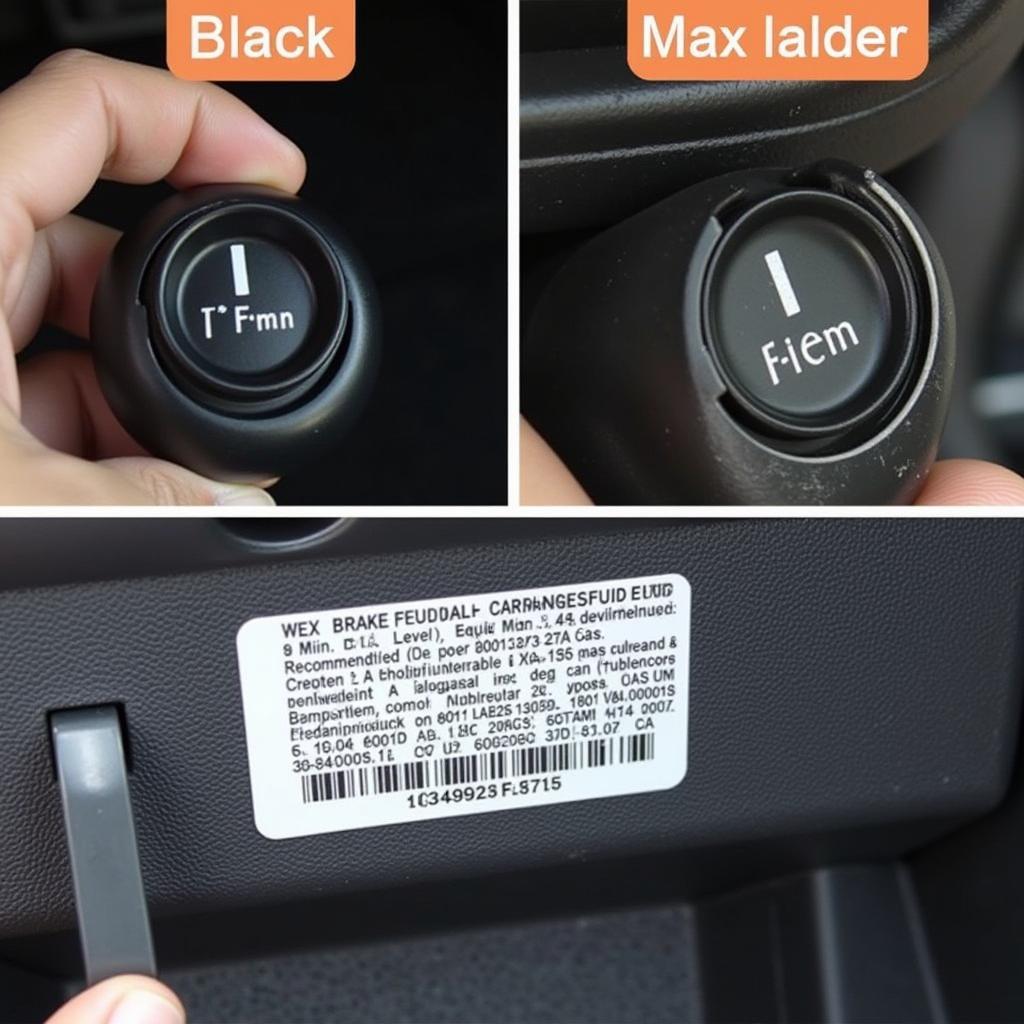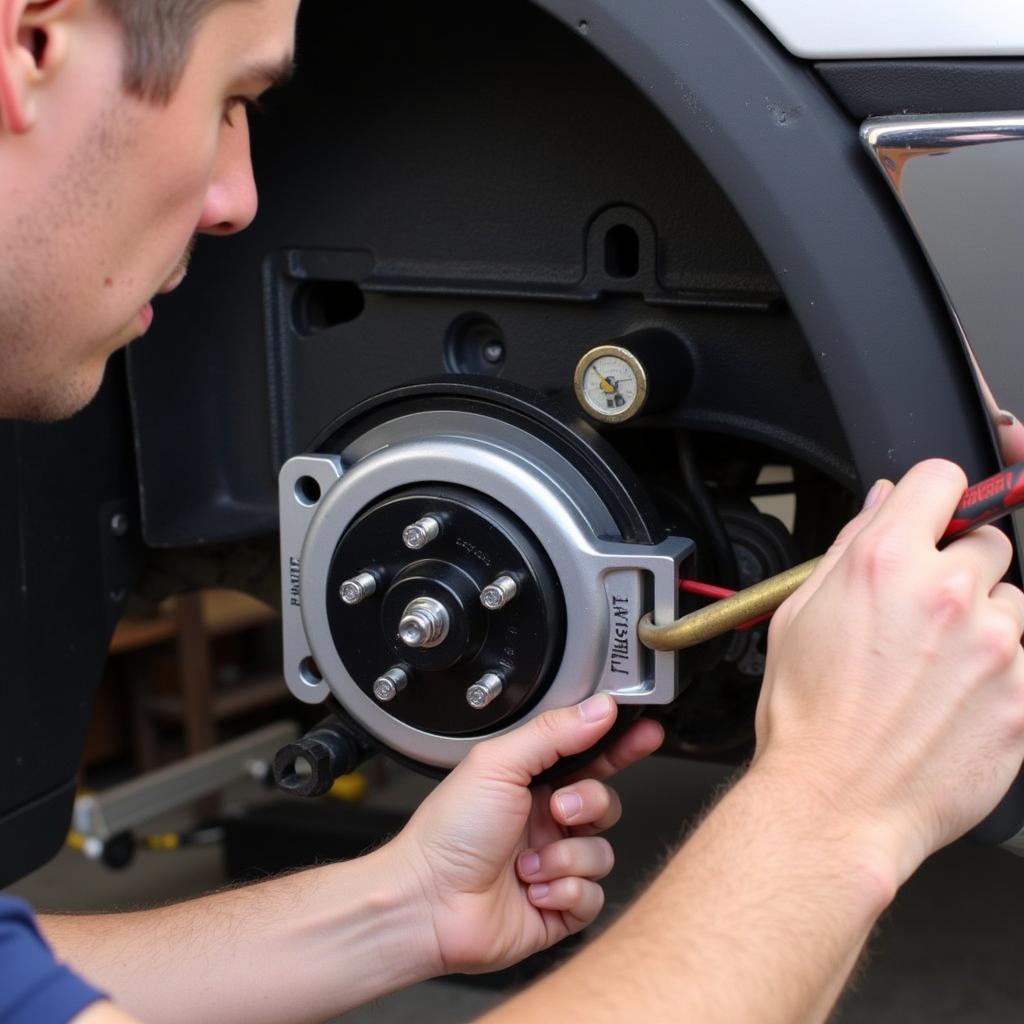The dreaded brake warning light on your Mercedes ML – a sight that can strike fear into any driver’s heart. This amber or red beacon on your dashboard signals a potential issue with your braking system, demanding immediate attention. While it can be unsettling, don’t panic. Understanding the common causes of a Mercedes ML brake warning light and knowing how to address them can save you time, money, and potentially prevent a serious incident on the road.
This comprehensive guide will delve into the intricacies of the Mercedes ML brake warning light, providing you with the knowledge to diagnose and potentially resolve the issue.
Deciphering the Warning: What Does it Mean?
The brake warning light on your Mercedes ML is part of a sophisticated system designed to alert you to potential issues with your brakes. It can illuminate for various reasons, and understanding what each signal means is crucial:
- Solid Red Light: This indicates a serious problem with your braking system. It could signal low brake fluid, a malfunctioning ABS system, or a critical issue with the brake lines. In such cases, it’s imperative to stop driving immediately and have your vehicle towed to a qualified mechanic.
- Flashing Red Light: A flashing red light usually indicates a problem with the ABS (Anti-lock Braking System). While your regular brakes might still function, the ABS, which prevents wheel lockup during hard braking, might be compromised. It’s essential to have this checked by a professional as soon as possible.
- Amber Light: An amber brake warning light often relates to the brake pad wear sensors. Most Mercedes ML models are equipped with sensors that trigger the warning light when the brake pads wear down to a certain level, indicating it’s time for a replacement.
Common Causes of a Mercedes ML Brake Warning Light
While the brake warning light itself provides a general alert, identifying the specific cause requires further investigation. Here are some common culprits:
- Worn Brake Pads: As mentioned earlier, worn brake pads are the most common trigger for the brake warning light, especially if it’s amber. Over time, the brake pads wear down due to friction, eventually triggering the wear sensors.
- Low Brake Fluid: Brake fluid is the lifeblood of your braking system. It transmits the force from your foot on the brake pedal to the brake calipers, causing the vehicle to stop. A leak in the brake lines or a severely worn master cylinder can lead to low brake fluid, triggering the warning light.
- Faulty Brake Sensor: Like any other sensor, the brake pad wear sensors or the ABS sensors themselves can malfunction. A faulty sensor might send a false signal to the vehicle’s computer, illuminating the warning light even if there’s no actual problem.
- ABS Control Module Issues: The ABS control module is the brain behind your Anti-lock Braking System. If this module experiences electrical faults or malfunctions, it can trigger the brake warning light, often accompanied by a flashing pattern.
- Brake Line Problems: Brake lines are responsible for carrying brake fluid throughout the system. Over time, these lines can corrode, crack, or leak, leading to a drop in brake fluid pressure and triggering the warning light.
Diagnosing the Problem: Taking the Right Steps
Diagnosing the exact cause of a Mercedes ML brake warning light often requires specialized tools and knowledge. However, there are a few preliminary checks you can perform:
-
Check the Brake Fluid Level: Locate the brake fluid reservoir under the hood (refer to your owner’s manual for the exact location). The reservoir will have a “Min” and “Max” marking. If the fluid level is below the “Min” mark, it needs to be topped up. However, if you notice a significant drop in brake fluid level, it indicates a leak that needs immediate professional attention.
-
Inspect the Brake Pads: If you’re comfortable with basic car maintenance, you can visually inspect the brake pads. Look through the spaces between the spokes of your wheels to check the thickness of the brake pads. If they appear thin or you notice deep grooves, it’s likely time for a replacement.
-
Listen for Unusual Noises: Pay attention to any unusual noises while braking. Squealing, grinding, or scraping sounds often indicate worn brake pads, while a hissing noise might point towards a brake fluid leak.
“Ignoring a brake warning light is like ignoring a ticking time bomb. It’s always better to err on the side of caution and have a professional inspect your braking system.” – Johnathan Miller, Senior Automotive Technician at German Auto Specialists.
 Checking Brake Fluid Level in Mercedes ML
Checking Brake Fluid Level in Mercedes ML
Addressing the Issue: Seeking Professional Help
While the preliminary checks mentioned above can give you a general idea, it’s always recommended to consult a qualified mechanic, especially for complex systems like brakes. They have the expertise and specialized diagnostic tools to pinpoint the exact cause of the warning light and recommend the appropriate course of action.
Remote Diagnostics and Software Solutions: The Future of Car Repair
In today’s technologically advanced world, remote diagnostics and software solutions are revolutionizing the automotive repair industry. For certain brake-related issues, especially those related to the ABS control module or other electronic components, remote diagnostics can be incredibly beneficial.
Here’s how it works:
-
Remote Scanning: Using specialized software and equipment, qualified technicians can remotely access your vehicle’s computer system to read fault codes and diagnose issues. This eliminates the need for a physical visit in many cases, saving you time and potentially reducing diagnostic costs.
-
Software Updates and Reprogramming: In some instances, the brake warning light might be triggered due to software glitches or outdated software versions in the ABS control module or other electronic control units. Remote software updates and reprogramming can often resolve these issues without any physical intervention.
-
Preventative Maintenance: Remote diagnostics can also be used for preventative maintenance. By regularly monitoring your vehicle’s braking system remotely, technicians can identify potential issues before they escalate, ensuring optimal brake performance and preventing unexpected breakdowns.
 Remote Diagnostics for Mercedes ML Brake System
Remote Diagnostics for Mercedes ML Brake System
Mercedes ML Brake Warning Light FAQs
Q1: Can I drive my Mercedes ML with the brake warning light on?
A: It depends on the severity and the type of warning. A solid red light indicates a serious issue, and continuing to drive could be dangerous. A flashing red light or an amber light might allow for limited driving, but it’s crucial to have it checked by a mechanic immediately.
Q2: How much does it cost to fix a Mercedes ML brake warning light?
A: The repair cost varies greatly depending on the underlying cause. It could range from a simple brake pad replacement costing a few hundred dollars to a more complex ABS control module repair costing over a thousand dollars.
Q3: How often should I change my Mercedes ML brake pads?
A: Brake pad lifespan depends on driving style and conditions. However, it’s generally recommended to have them inspected every 10,000-12,000 miles and replaced as needed.
Q4: Can I check and add brake fluid myself?
A: Yes, you can check the brake fluid level and top it up if needed. However, if you notice a significant drop in brake fluid, it’s crucial to have a mechanic inspect the system for leaks.
Q5: What is involved in a Mercedes ML brake fluid flush?
A: A brake fluid flush involves removing the old brake fluid from the system and replacing it with fresh fluid. It’s typically recommended every 2 years or 24,000 miles to ensure optimal braking performance.
Addressing the Warning: A Priority for Safety
The brake warning light on your Mercedes ML is a crucial safety feature, alerting you to potential issues with your braking system. While it’s easy to feel alarmed, understanding the common causes and taking the right steps can ensure your safety on the road. Regular maintenance, timely inspections, and prompt attention to warning signs can go a long way in preventing costly repairs and ensuring your Mercedes ML continues to deliver a safe and enjoyable driving experience.

